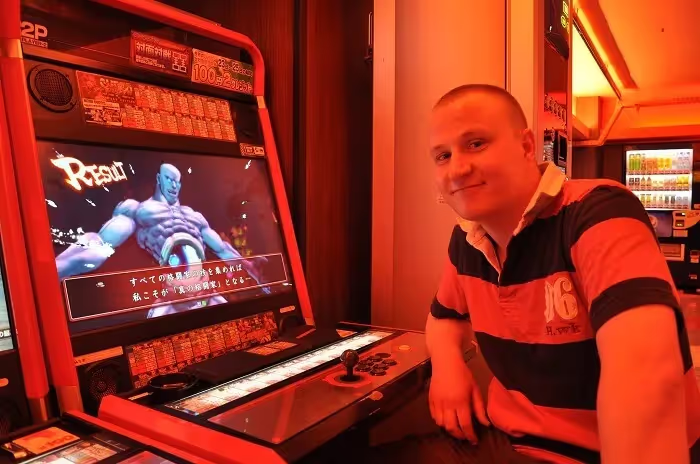Ragnar Tørnquist knows how to make an atmospheric game. The Longest Journey and its Dreamfall sequels were layered with a mix of sci-fi trimmings and fantasy staples, but they had a quality which didn’t feel borrowed or cliched. Arcadia and Stark were very different worlds, realised superbly. With Draugen, Tørnquist has gone back to his home country of Norway for inspiration, albeit a hundred years earlier than today. Fjords and waterfalls mingle with a sense of isolation as your character Edward Harden and his 19-year-old ward Lissie arrive at a remote village in search of Edward’s missing sister Betty.

Now, I’m normally rubbish at plot twists. Genuinely, completely oblivious. It takes me all my effort to concentrate on who is doing what in a film, let alone actually comprehend that there may be other things going on that I’m not seeing. Films like The Sixth Sense and The Usual Suspects knocked me sideways; to me, Chekhov’s Gun is the name of a quaint Russian rifle range. Yet even I, with my limited capacity for foresight in narrative matters, was able to deduce what Draugen’s main mystery after about twenty minutes.
That isn’t to say I clocked it all. The village of Graavik holds many puzzles for Edward and Lissie to solve, which only careful exploration of your surroundings will achieve. The pair’s invitation to visit from a respected family becomes more eerie when it’s apparent that no-one seems to be home. Shops and amenities are closed or boarded up, while the excellent sound design ensures that every creaking floorboard or squawking bird is a cause for consternation. The town, you can imagine, would be creepy even if there were dozens of people living there. The ferry stopped coming and all means of communication has been broken for an age. This isn’t a horror game, at least not in a traditional sense. Draugen is a search for answers, both without and within, by two characters who are — despite exterior appearances — fundamentally broken in their own way. Edward in particular has suffered in the past and now looks like a washed-up Harry Potter in his forties, so his search for his sister feels like an act of redemption, a means of restoring some of his faith in humanity.

Betty’s belongings are uncovered during the journey: a hat here, a brooch there, each one providing a clue to help Edward to move on to the next. Underpinning his personal mission is the tale of the town itself, a small community which became bitterly divided over a discovery in its mine, which led to a chain reaction of tragic events.
There are two tales snaking their way through the course of the game’s three hours, then, but the game sadly fails to capitalise fully on either. Despite the remarkable scenery providing a perfect setting for a story about isolation, loneliness and loss, the narrative beats are often uneven — especially when it comes to Graavik’s history. The game packs in so many names and relationships in such a short space of time that it’s often hard to keep track of the story, despite Red Thread Games’ best efforts. When Edward starts spouting exposition towards the end about exactly what could have happened, in any other game it would come across as awkward. Here, it feels like a blessed relief.

I mentioned puzzles earlier, which is probably generous as the game is basically a walking simulator. The toughest challenge you’ll face is finding something in one room which relates to something in an adjacent one. Gameplay-wise, this is more akin to What Remains of Edith Finch than something like Gone Home. The village is a pleasure to explore though, mainly thanks to the picturesque depiction of a remote Norway community combined with some truly splendid lighting effects. Edward can sit at various points to draw the landscape, which does nothing to further the plot, but does provide ample opportunity for the studio to show off its visual chops. Whether you feel they compensate for a lack of anything substantial to do will depend on your capacity for indulging Tørnquist’s flights of fancy. He is nothing if not ambitious; while The Longest Journey remains one of my favourite ever point-and-clicks, even that suffered from world-building so grand in scope that it was never going to be completely fulfilled.

Despite Draugen’s flaws though, I’m finding it hard to come down too harshly on it. It does a lot of things from a first-person perspective which I’ve not seen before in this genre, while the themes its delivers are well-meaning, if slightly heavy-handed. Sure, the finale does feel like it’s been wrapped up a little too neatly and yes, when you think about it once the credits roll, some of the major plot points aren’t addressed particularly well. But the voice acting is generally good, the first couple of acts are engaging enough, and the game’s brevity — while frustrating given what remains unsolved — at least means it won’t outstay its welcome. As ever with Tørnquist’s games, you’ll come for the mystery, but you’ll stay for the atmosphere.
You can subscribe to Jump Chat Roll on your favourite podcast players including:
Let us know in the comments if you enjoyed this podcast, and if there are any topics you'd like to hear us tackle in future episodes!



